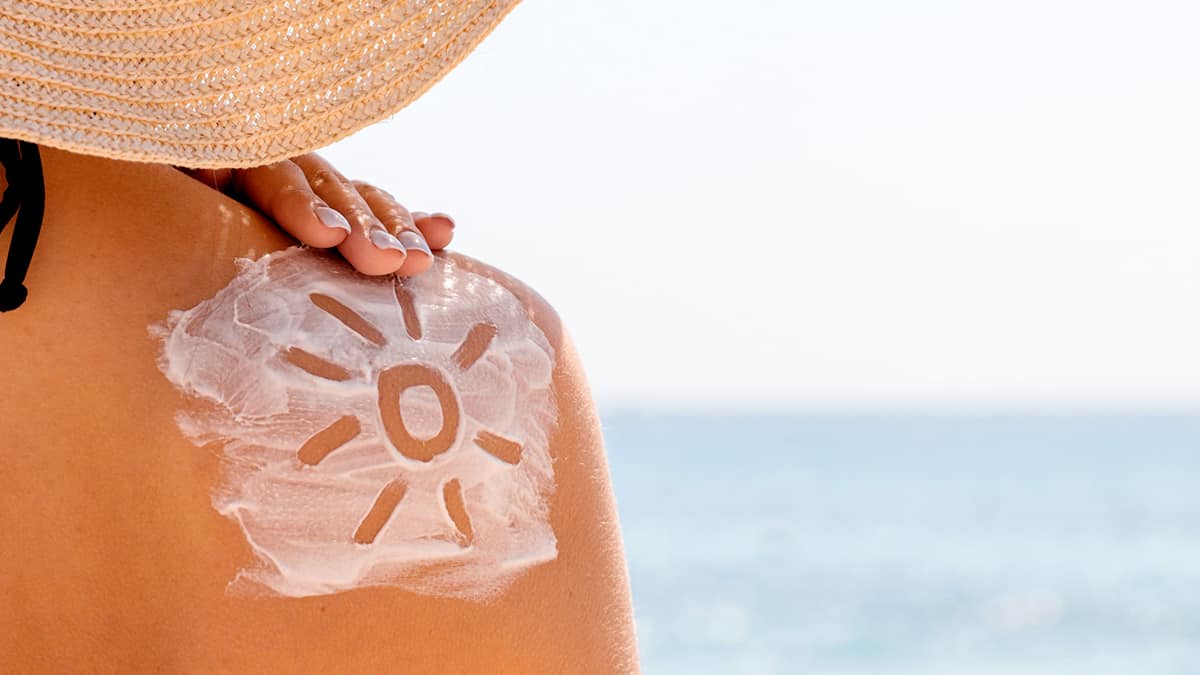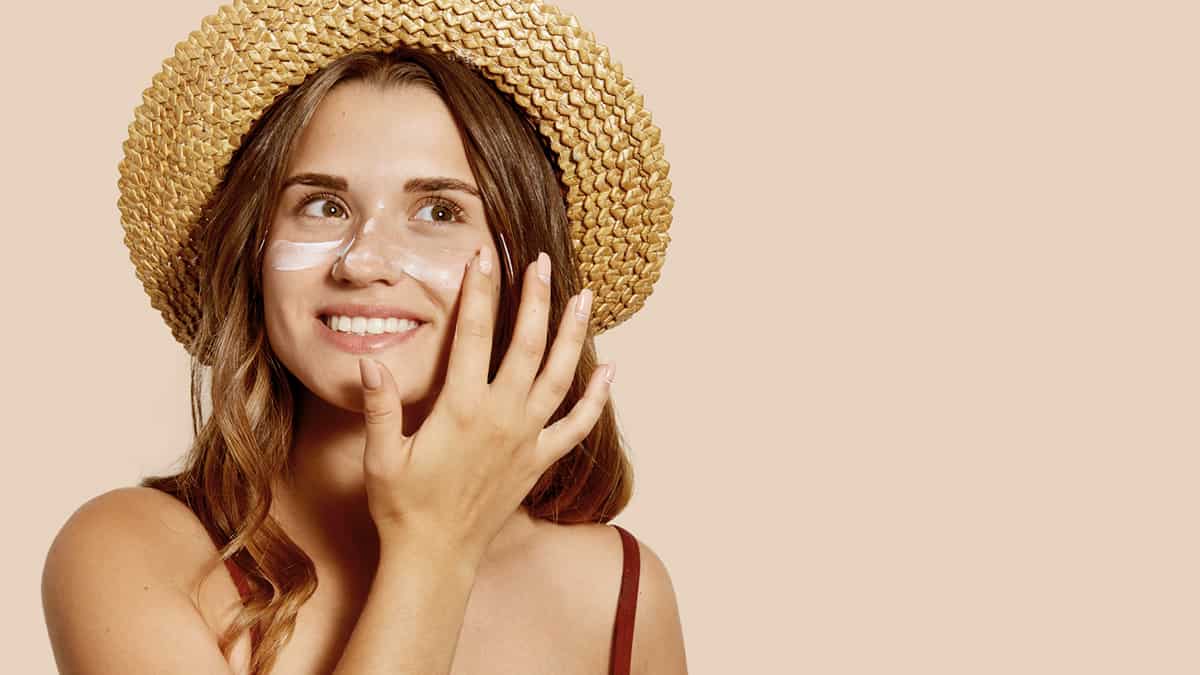Sunscreen, Skin Cancer, and Staying Safe: Does Sunscreen Really Help Prevent Cancer?
Physical Health

Spending time in the sun can be great for your health. A little bit of sunlight encourages your body to make vitamin D, which is important for bone health, nerve and muscle function, and immune health. Too little vitamin D can lead to weakened bones and may be linked to conditions like cancer, heart disease, and diabetes. Being outside can also lower stress levels and boost mental health.
However, the sun can also harm your skin if you’re not careful. Sunlight can damage skin cells, leading to signs of premature aging such as wrinkles, an uneven skin color, and a leathery appearance. Too much sun can also lead to eye diseases. Importantly, sun exposure is also the main cause of skin cancer. Therefore, it’s important to keep yourself safe when you’re outdoors.
Skin Cancer: The Basics
Skin cancer develops when skin cells become damaged and begin growing too quickly. If left untreated, cancer cells can move from the skin to other parts of the body.
About one in five people in the U.S. will develop skin cancer at some point in their life. It is the most common type of cancer for people living in the U.S.
There are a couple of different types of skin cancer. The two most common types are basal cell carcinoma (BCC) and squamous cell carcinoma (SCC). The more sun you get throughout the course of your life, the higher your risk of developing BCC and SCC. Another type of skin cancer, melanoma, is rare but is more aggressive and harder to treat. The more sunburns you received in your teenage years, the higher your chances of being diagnosed with melanoma.
The Causes and Risk Factors of Cancer
Cancer develops when a cell’s genes — sets of instructions that tell the cell what to do — become changed or mutated. This causes the cell to begin dividing out of control, forming many new cells that make a tumor.Skin cancer is primarily caused by sunlight, which contains ultraviolet (UV) rays that harm skin cells. There are two main types of UV rays that play a role in skin cancer. UV-A rays can infiltrate into deeper layers of the skin, where they form free radicals (tiny molecules that can damage many parts of the cell, including the cell’s genes). UV-B rays mainly stay in the outermost layer of skin and cause changes in DNA, the material that makes up genes.
Certain risk factors can increase your chances of developing skin cancer. These include:
- Spending a lot of time in the sun or in tanning beds
- Experiencing several sunburns at a young age
- Having light skin that doesn’t tan
- Having blond or red hair, or light-colored eyes
- A history of being diagnosed with unusual moles
- A history of conditions that lead to ongoing skin inflammation or a weakened immune system
- A family history of skin cancer
- Undergoing radiation treatments
- Exposure to certain chemicals, including solvents, vinyl chloride, or arsenic
People without these risk factors can still develop skin cancer. However, skin cancer is more common in people with these features.
Can Sunscreen Protect You From Cancer?

Many experts recommend sunscreen as a way to reduce the harm caused by sunlight. Sunscreens contain a variety of ingredients that can absorb and block UV-A or UV-B rays.
What Does the Research Say?
Studies have mostly found that using sunscreen can decrease skin cancer rates.
In particular, one large clinical trial conducted in Australia instructed some of the study participants to apply sunscreen every day, while the rest of the participants were free to decide when they put on sunscreen. After 4.5 years, the people who used daily sunscreen were 40% less likely to have SCC, the second most common skin cancer type.
After 15 years, the researchers followed up with the study participants and found that they were also less likely to experience melanoma, the most aggressive form of skin cancer. Other, smaller studies have also found that using sunscreen can reduce rates of SCC and of actinic keratosis, a condition that can develop into skin cancer.
Interestingly, this clinical trial did not find that sunscreen helped protect against BCC — people who used daily sunscreen and people who did not developed this skin cancer at similar rates. Experts speculate that this may be because BCCs take a very long time to develop. Longer studies are needed in order to determine whether sunscreen can prevent BCC.
Research has also found that sunscreen can help prevent wrinkles, uneven skin coloration, and spider veins (small blood vessels that appear close to the skin’s surface, leading to reddish lines on the skin).
Overall, experts such as the Centers for Disease Control and Prevention (CDC) and the American Academy of Dermatologists (AAD) recommend using sunscreen when spending time in the sun.
Who Should Use Sunscreen?
Everyone should put on sunscreen before going outside. Even people without skin cancer risk factors can develop the condition, so sunscreen can help all people, regardless of their age, race, and other factors.
However, experts recommend not applying sunscreen to infants younger than six months. These children may be more likely to experience a skin rash or other side effects. Instead, keep your newborn in the shade, dress them in clothing and hats that cover their skin, and make sure they stay well-hydrated with formula or milk.
Sunscreen should be worn every day for the best protection. UV rays can pass through clouds, so you can still experience sun damage even if it’s not a sunny day. Additionally, you are still exposed to UV light during the daytime even when it’s cold outside.
What SPF Should You Use?
Sunscreens are rated based on their sun protection factor (SPF). The SPF measures how much UV light the sunscreen protects against. The higher the SPF, the more you are protected.
The CDC recommends using at least SPF 15 sunscreen, while AAD recommends SPF 30. Some experts believe that higher SPF ratings may be more helpful, because people often don’t apply enough sunscreen. For example, if you are using SPF 30 sunscreen and only apply half the recommended amount, you may only be getting the equivalent of SPF 15 protection.
The CDC and AAD also suggest making sure your sunscreen protects against both UV-A and UV-B rays. It also helps to use sunscreen that is water resistant if you’re planning on swimming or think you may end up sweating a lot.
Tips for Applying Sunscreen
Make sure you’re putting on enough sunscreen. Experts recommend using an ounce of sunscreen over your entire body. This is enough sunscreen to fill one shot glass. Make sure to cover all of your skin, including your ears, the tops of your feet, and — if you have short hair — your scalp. Additionally, use lip balm with an SPF of at least 30 to protect the skin of your lips.
Sunscreen works best when it is applied at least 15 minutes before you go outside. Reapply every couple of hours, or after you swim, towel off, or sweat.
Is Sunscreen Safe to Use?
Sunscreen can occasionally lead to reactions such as stinging, burning, or a rash. They may also clog the pores. In some cases, people may be allergic to certain sunscreen ingredients, but this is rare.
Some people worry that certain sunscreen ingredients may not be safe if they are absorbed into the bloodstream. In particular, there has been concern about two common ingredients — oxybenzone (BP-3) and octinoxate (OMC). So far, studies have not found any strong links between these ingredients and health problems, although researchers are continuing to look into this area.
It is important to note that sunscreens containing BP-3 or OMC have been banned in Hawaii and in Key West, Florida. This is because these ingredients may harm coral reefs and negatively impact plants and animals that live in the water. Avoiding sunscreens with these ingredients may be better for the environment.
Beyond Sunscreen: Keep Yourself Safe From the Sun

There are also other strategies that you can use along with sunscreen to make sure you’re staying safe. The more approaches you take, the more you can keep your skin healthy and reduce your risk of skin cancer.
Other Ways to Protect Your Skin
If you want to stay safe, you may also want to try:
- Avoiding sunlight during the hottest part of the day — The sun gives off more harmful UV rays from about 10 a.m. to 4 p.m., so limit your time outside during these hours.
- Staying in the shade — Spend time under a tree, tent, or umbrella in order to reduce the amount of UV light coming into contact with your skin. It’s still a good idea to wear sunscreen in the shade, however.
- Wearing protective clothing and hats — Long pants and long-sleeved shirts made from tightly-woven fabric can help keep the sun off of your skin. You can also buy rash guards or swim cover-ups that can provide UV protection while at the beach or pool. A hat with a brim can also protect your face, neck, and scalp from sunburn.
- Using sunglasses — Look for sunglasses that offer protection against UV-A and UV-B rays, which can keep the skin around your eyes safe and help lower your chances of developing eye problems like cataracts.
- Avoiding tanning machines — Indoor tanning using tanning beds or booths also exposes you to UV rays and can lead to premature aging and skin cancer.
Sunlight helps your body produce vitamin D, so blocking the sun from reaching your skin may mean that your body makes less of this nutrient. If you are careful about protecting yourself from the sun, you may want to consider getting vitamin D from a supplement or multivitamin, or eating foods such as dairy products that have been fortified with this vitamin.
Ask Your Doctor About Skin Cancer Screening
A skin cancer screening is an exam in which you, a doctor, or a nurse checks the skin all over your body for signs of cancer, including moles or marks that have an unusual size or color. Screening may help you find skin cancer early, which could lead to a better outcome.
You may want to ask your doctor if they recommend that you undergo skin cancer screening. It may be a good idea for people with skin cancer risk factors.
You can also perform your own screening at home. Check all of your skin, including near your genitals, under your breasts, on your scalp, between your fingers and toes, and underneath your nails. You will need a mirror in order to properly check some areas. Talk to your doctor if you notice any new bumps, sores that don’t heal, or moles that are irregularly-shaped, painful, oozing, or bleeding.
Know the Signs of Skin Cancer
If you spend a lot of time in the sun, or you have a history of sun exposure, it helps to know skin cancer symptoms so you know what to watch out for.
When looking for signs of skin cancer, think “ABCDE":
- Asymmetrical — The spot is oddly-shaped rather than being circular and has two halves that look different
- Border — The outside edge of the spot is jagged or uneven
- Color — The mole or spot has several different colors inside
- Diameter — The spot is bigger than a pea
- Evolving — The mole or spot’s appearance has changed
Conclusion: Sunscreen and Skin Cancer
Research clearly shows that regularly using sunscreen can reduce your chances of being diagnosed with skin cancer. It can also help prevent signs of premature aging. However, it is not the only thing that can help protect you from the sun’s UV rays — using other strategies like wearing protective clothing and staying in the shade can all play a role in keeping you safe and healthy.